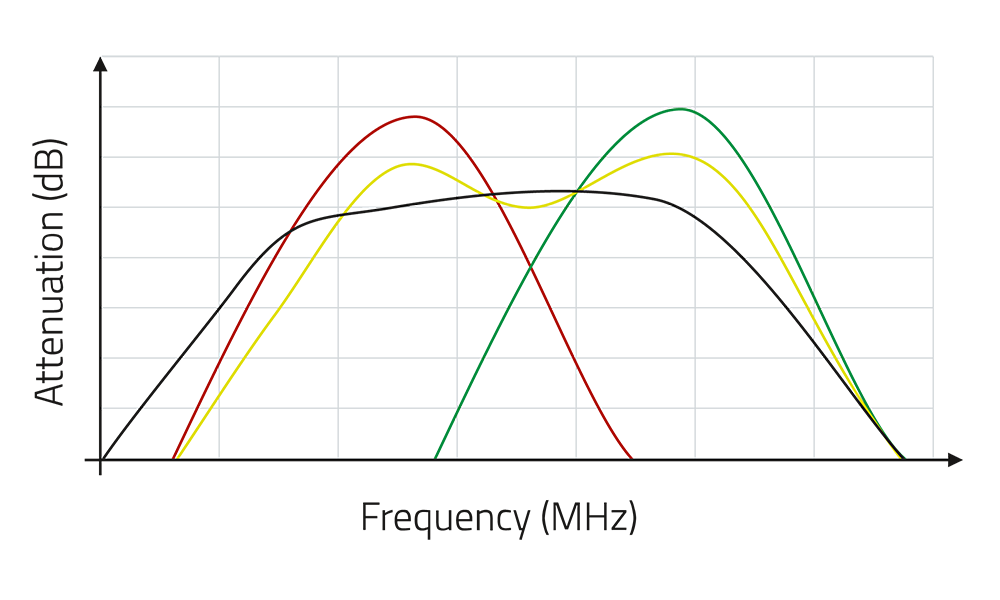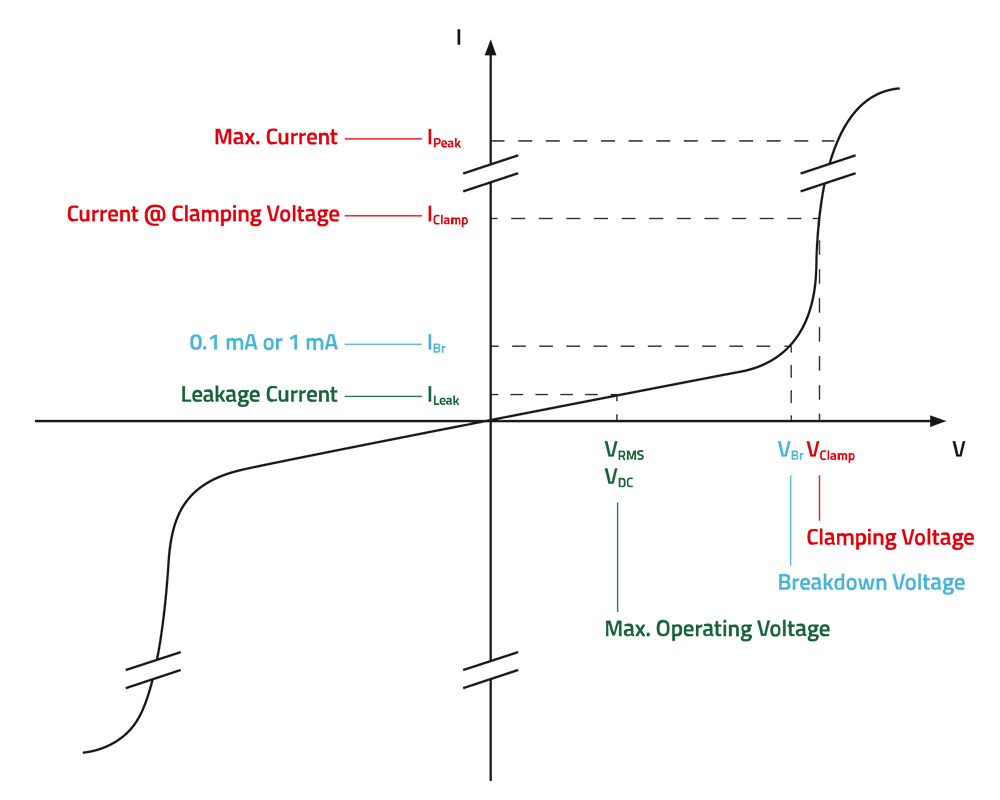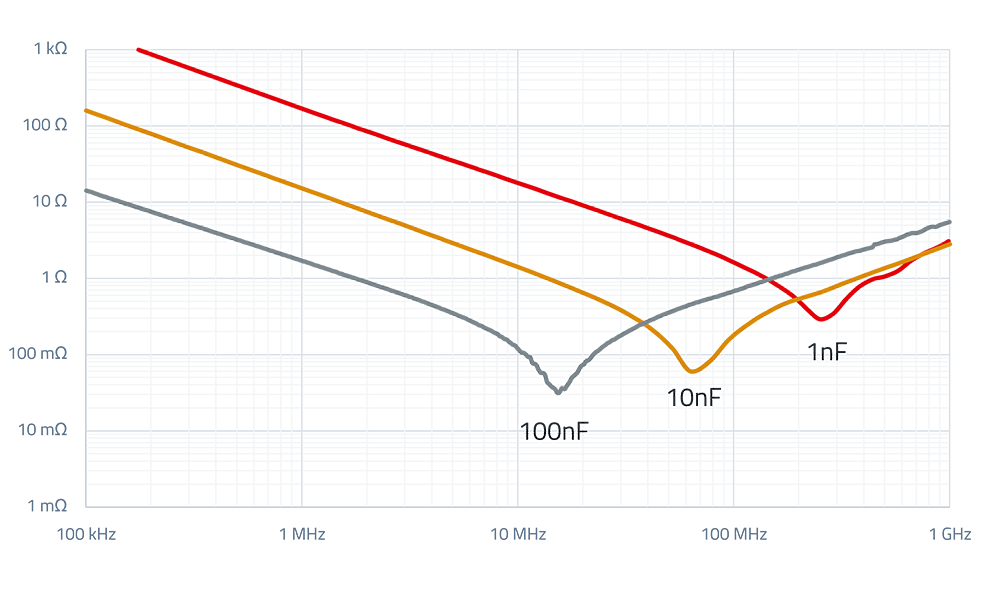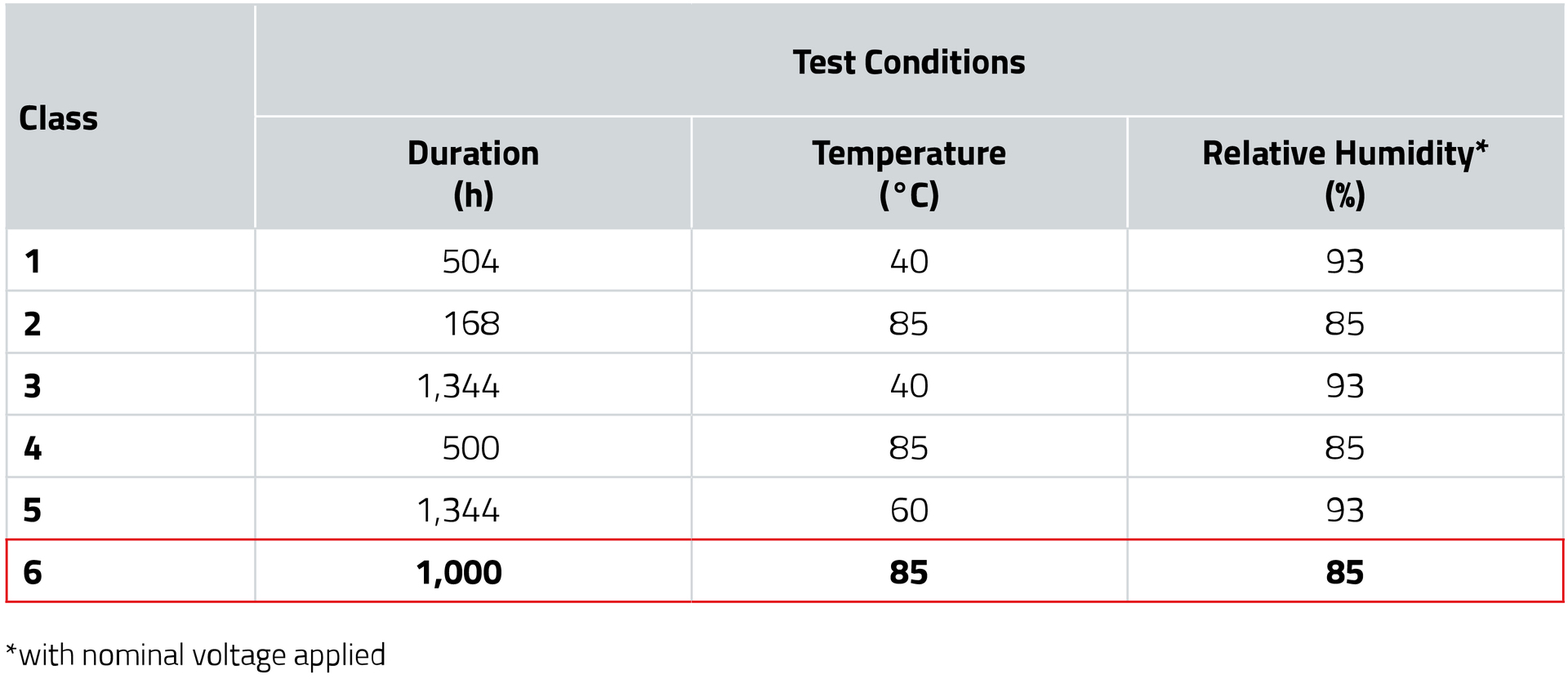Mains Filter
Surge Protection
Disk Varistors can protect your circuit against overvoltage events such as surges and bursts. For mains applications against overvoltage events such as surges and bursts.
Common Mode Chokes
A common mode choke filters not only conducted common-mode noise but also differential-mode noise by utilizing its stray inductance. Manganese-Zinc is the standard core material for this application but for broad band EMI nickel-zinc or nanocrystalline cores may also be used.
X Capacitors
X capacitors are used between phase and neutral and thus filters differential-mode interference by means of their frequency-dependent impedance. For mains applications, higher safety standards are required, certified by ENEC, UL, and CQC.
Y-Capacitors
Y-capacitors divert common mode noise from both line and neutral to protective earth potential.
Filter Chokes
Differential mode noise <30 MHz is best attenuated by ferrite based chokes.
Line Filter
Differential mode noise <30 MHz is best attenuated by ferrite based chokes.
Terminal Blocks
Terminal block connectors (TBL) provide a secure and reliable way to connect wires in mains line assemblies. They allow for quick installation, safe handling of high-voltage connections, and flexible wiring options. Their robust design ensures durable connections for industrial devices.
Filter Chokes

Short Introduction to Mains Filters
A mains filter reduces interference between the device and mains line. This prevents noise coupling from the mains line into the device (increasing immunity) and vice versa (decreasing emissions).
To filter both common-mode and differential-mode noise, a common-mode choke is supplemented with X and Y capacitors. The bandwidth of the filter can be increased by adding a second choke with a different core material.
Overvoltage protection and a fuse should be placed at the input stage of the filter.
Learn More About Mains Filters
-
By choosing the right core material for common mode chokes, the desired attenuation curve depending on the frequency can be chosen. While manganese-zinc has its attenuation maximum at lower frequencies, it is higher for nickel-zinc. Nanocrystalline core material and the combination of manganese-zinc with nickel-zinc exhibit broader attenuation behavior.
-
By selecting different cores for filter chokes, the impedance behavior over frequency can be influenced. The range of impedance maxima extends from 100kOhm at 1 MHz to a few kOhm at 250 MHz.
-
Bei den Leitungsfiltern lassen sich verschiedene Stufen unterscheiden. Einstufige Filter (single stage) bieten eine Dämpfung von bis zu 75 bis 80 dB. Beim verbesserten einstufigen Filter (single stage advanced) sorgt ein zusätzlicher x-Kondensator für eine bessere Unterdrückung des Gegentaktrauschens. Die höchste Gleich- und Gegentaktdämpfung bietet der zweistufige Filter (two stage) mit zusätzlicher Gleichtaktdrossel und weiterem x-Kondensator.
-
Disk varistors are used in surge protection. It is important that the clamping voltage Vclamp is sufficiently low so that sensitive electronic components in the circuit do not experience voltage spikes. Once the clamping voltage is reached, the voltage hardly increases further; it is "clamped". Steeply rising currents are diverted with low resistance. If the current exceeds Ipeak, it can lead to the destruction of the disk varistor. The maximum operating voltage is significantly lower than the clamping voltage.
-
In surge protection, a sensitive electronic component (Load) is protected by a parallel discharge path (VDR), which becomes conductive when the breakdown voltage of the protective element (VDR) is reached. In this way, the surge (Transient) does not reach the sensitive load (Load) and is "clamped" to the clamping voltage (Clamping Voltage).
-
In the suppression of EMI signals, capacitors, known as X and Y capacitors, are also used. Depending on the frequency, the impedance of a capacitor varies by several orders of magnitude, as can be seen in the logarithmic visualization. Regardless of the capacitors's capacitance, the impedance curves are qualitatively similar. However, the capacitances do influence the respective frequencies of the impedance minima.
-
In the suppression of EMI noise signals, capacitors are used as so-called X and Y capacitors. On the left side of the image, voltage ripples from the AC power source are visible, which prevent a clean signal waveform. On the right, a clean sine wave is shown, which has been smoothed after filtering the voltage ripples of the AC power source with interference suppression capacitors.
-
Harsh environments with high temperatures and high humidity can degrade the dielectric layers in capacitors, thereby reducing their capacitance. The table shows the test classes from 1 to 6 and under which conditions - duration, temperature, and relative humidity - the capacitors were tested at nominal voltage.











